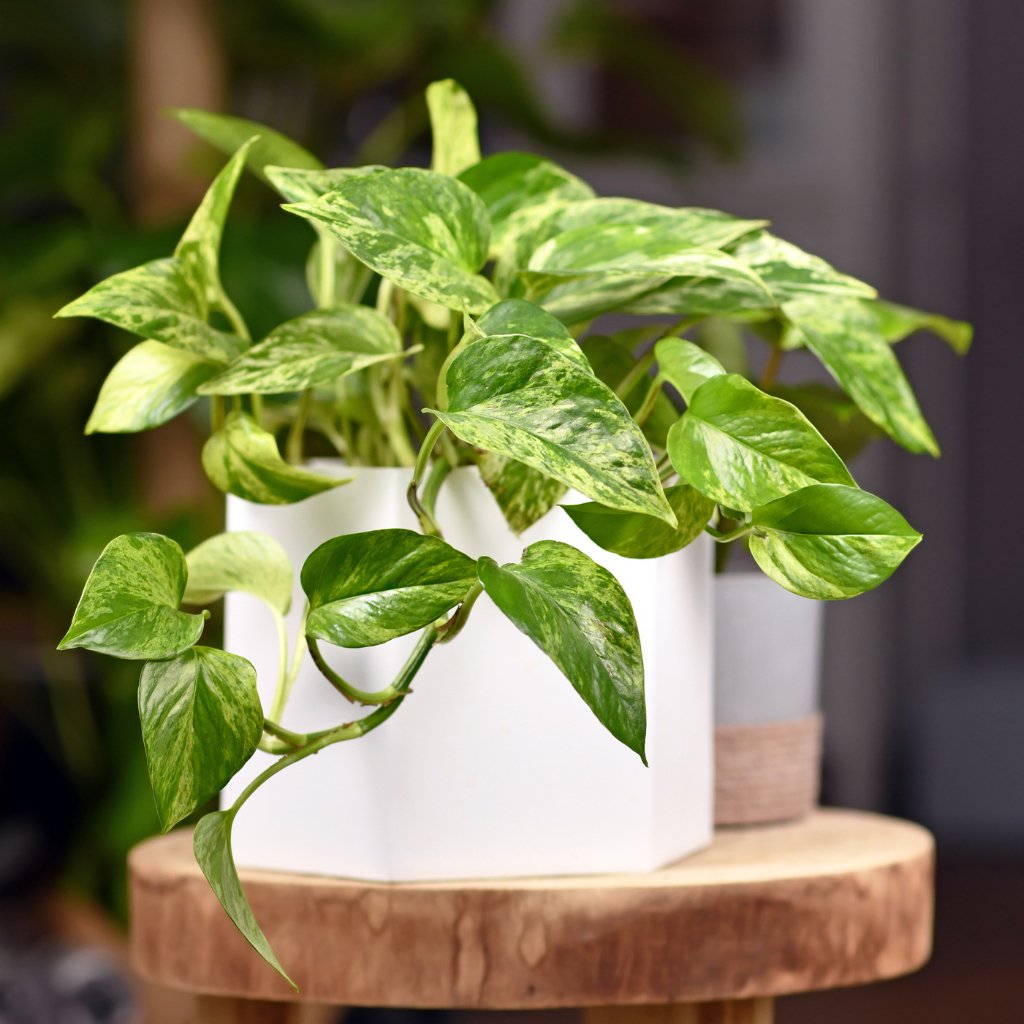Light Requirements:
Pothos plants thrive in bright, indirect light but are versatile and can also tolerate low light conditions. This adaptability makes them suitable for various spots in your home.
Watering:
Allow the soil to dry out between waterings. Overwatering can lead to root rot, so it's essential to ensure the pot has proper drainage. Check the soil's moisture by sticking your finger an inch or two into the soil. If it feels dry, it's time to water.
Repotting:
Pothos is a fast-growing plant, so you might need to repot it every couple of years or when it becomes root-bound. When repotting, choose a pot that's slightly larger than the current one and ensure it has good drainage.
Grooming or Pruning Needs:
Pothos can be pruned to control its size and shape. Regularly trimming the vines can encourage fuller growth. Remove any yellow or damaged leaves to keep the plant looking its best.
Compatibility with Pets:
Pothos is non-toxic to animals, making it a safe choice for homes with pets. However, as with all plants, it's always a good idea to keep them out of reach of curious pets.
Additional Tips to Remember:
- Pothos is known for its air-purifying qualities. It can help remove toxins and pollutants from the air, contributing to a healthier indoor environment.
- Pothos can be propagated easily from stem cuttings. To do this, cut a piece of stem with at least two leaves, and place it in water or soil to root.
- The plant's leaves are variegated with white, yellow, or green, adding a touch of color and vibrancy to your space.
- Pothos is also known as Epipremnum aureum and is recognized for its long, heart-shaped leaves.
- This plant is not only beautiful but also functional, making it a popular choice for home décor.
With proper care, Pothos can be a delightful and low-maintenance addition to your indoor plant collection. Its adaptability and resilience make it perfect for both novice and experienced plant enthusiasts.


